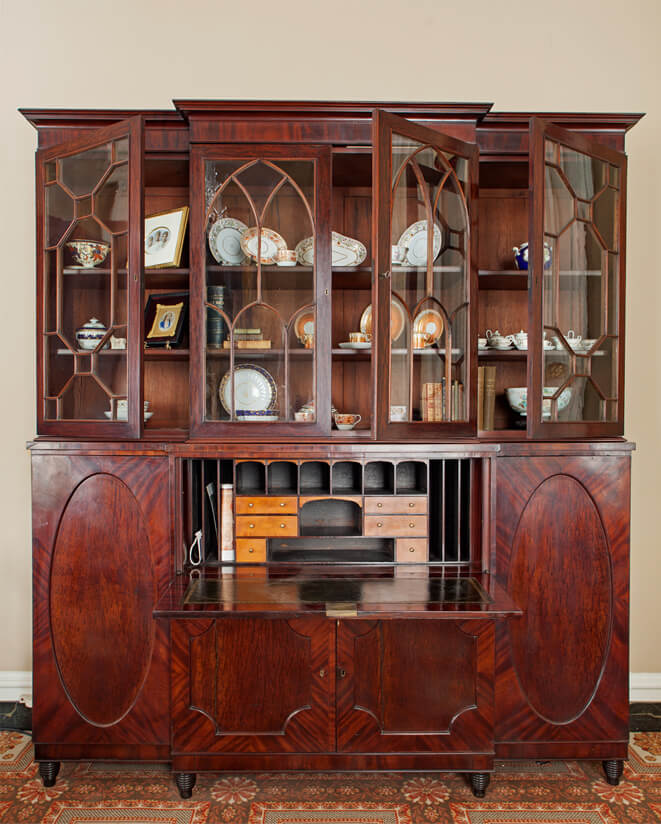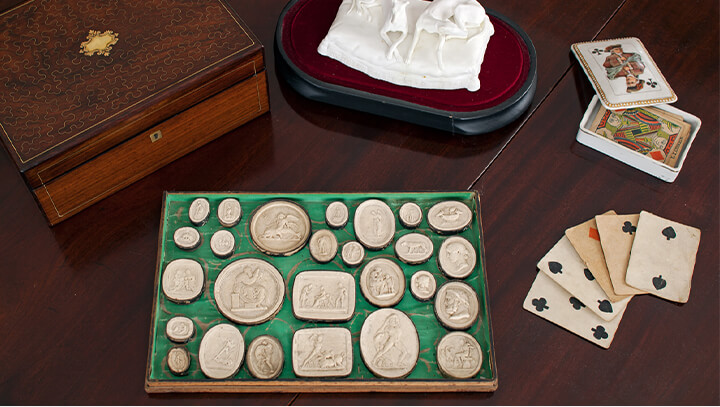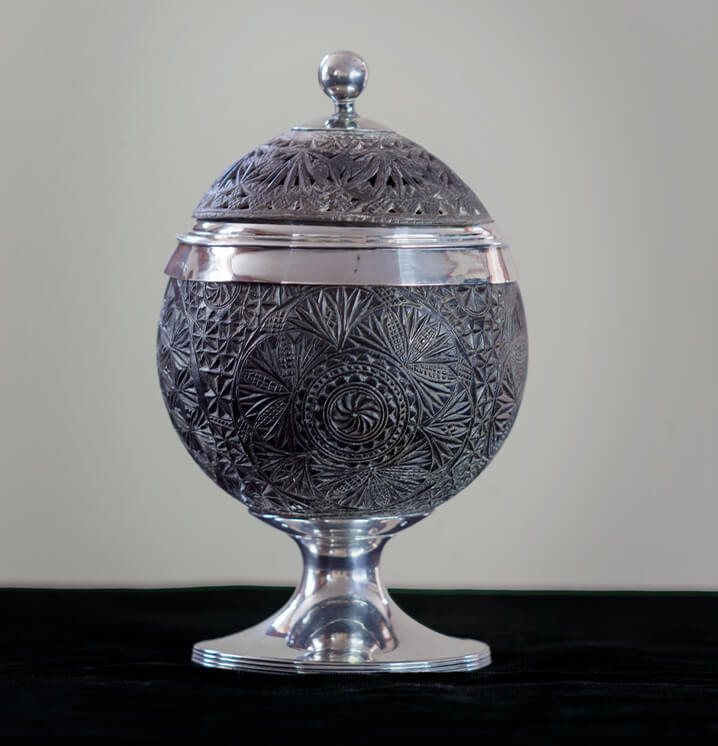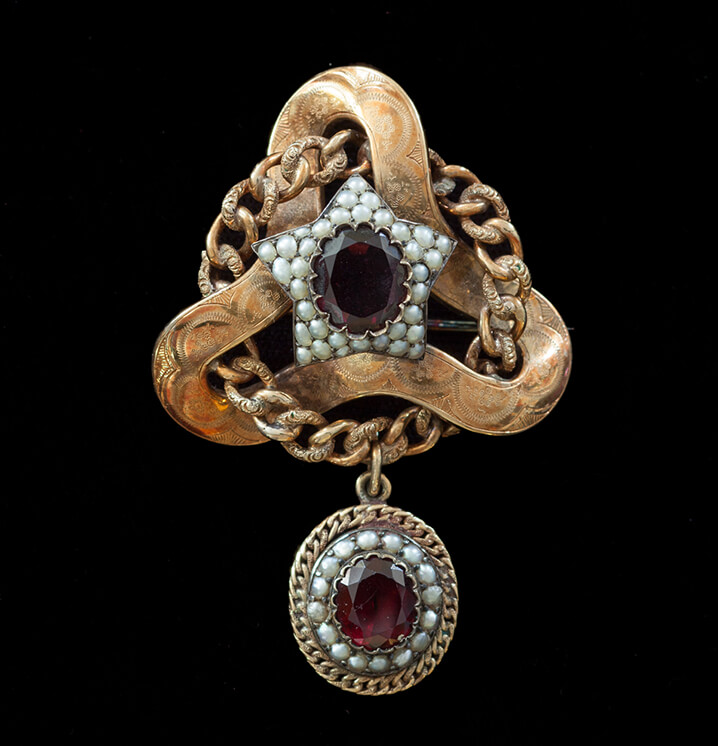
Home, Collections & Gardens
The Museum proudly exhibits and preserves one of the finest collections of 19th century furnishings related to the history of Savannah and Georgia.

Thoughtfully Collecting
Carefully displayed to reflect how the house would have been originally furnished and used during the 1850s and 1860s, the collection helps to offer a glimpse into the life of the Low family.
Visitors are treated to a wide range of late 18th and 19th century porcelain, furniture, decorative arts, paintings, and silver. Numerous pieces belonged to the Low family and their close relatives. In collecting, when family pieces could not be located, an emphasis was placed on objects originally used in Savannah during the same time period and in the state of Georgia.
One of the most important examples in the collection is situated against the south wall of the Informal Parlor. It is a breakfront secretary originally owned by Robert Mackay, Mary Low’s maternal grandfather. Made in 1810 by famous Philadelphia cabinet maker, Joseph Barry, it is a beautiful specimen of early nineteenth century American furniture making.
Barry, an Irish immigrant who settled in Philadelphia, temporary lived in Savannah in 1798. He fled the yellow fever epidemic in Pennsylvania and relocated to Georgia. Advertising his wares at “Mein’s and Mackay’s Stores under the Bluff”, he continued a long relationship with this firm for years which resulted in Mackay’s acquisition of the breakfront secretary.
Family Treasures
Throughout the home a variety of family-related pieces are displayed including a portrait of Andrew Low and a portrait of his second wife, Mary Cowper Stiles Low. Andrew’s portrait hangs over the mantle in the Front Parlor and depicts the young, red-haired Scottish immigrant at the beginning of his successful career. The artist was George Washington Conarroe, a Philadelphian who painted the likeness during a brief professional visit to Savannah in 1836.
Mary’s portrait, a large oil on canvas, hangs over the mantle in the Back Parlor and was painted by an unknown artist. It portrays Mary as a confident young woman wearing a striking blue dress with a lace collar.
Beautiful silver is displayed in the Dining Room including several pieces that belonged to Mary Low’s family. An interesting silver-mounted, carved coconut shell, 1797-1798, was owned by Robert Mackay, Mary’s grandfather. Upstairs, in the front northeast bedroom, resides a charming rosewood writing desk believed to have been used by notable author William Makepeace Thackeray during a stay with the Lows. This desk is attributed to a well-known New Jersey cabinetmaker, John Jelliff, and is crafted in the rococo revival style.


